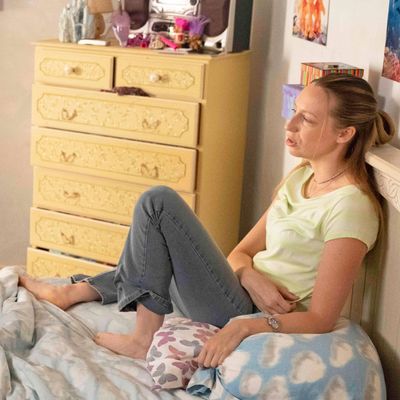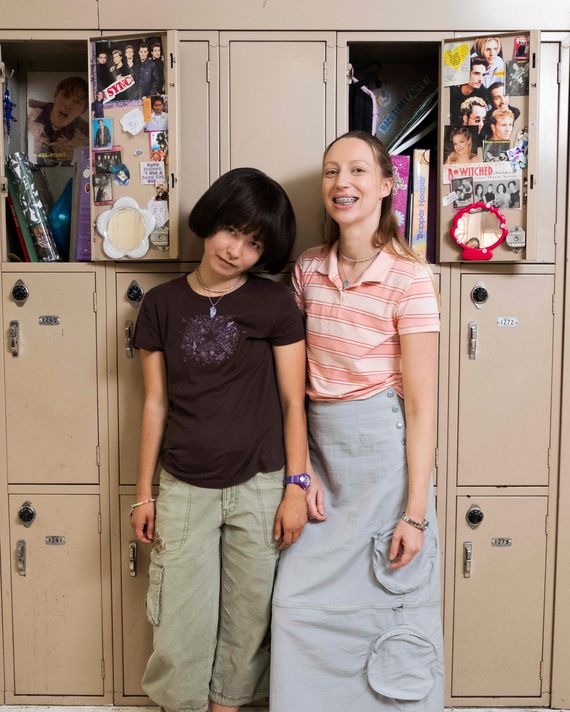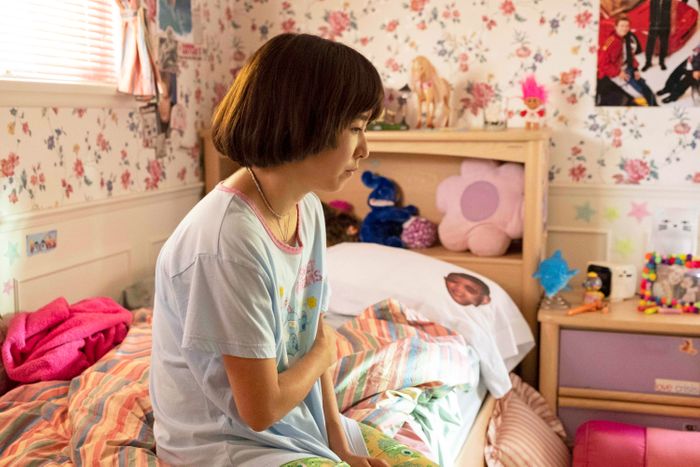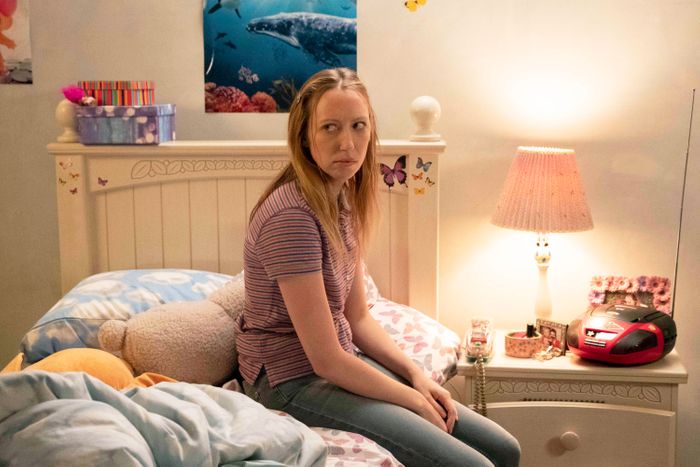
The secret to PEN15’s success lies in its precision. The costumes, the sets, the references — in no other year but 2000 could our 13-year-old heroes, Maya Ishii-Peters and Anna Kone (played, respectively, by 31-year-old co-creators Maya Erskine and Anna Konkle), exist. With its irreverent blend of nostalgia and bite, the half-hour Hulu series has quickly become a must-watch binge for those who like comedy that hits close to home.
That’s in no small part thanks to pitch-perfect world-building from production designer Grace Alie. A smattering of eyesore wall décor (from boy band collages to “Got Milk?” ads), must-have period props (Anna’s Windows computer is, in a word, prehistoric), and an unlikely sexual awakening (with an assist from a pair of My Little Pony toys) combine to transport millennial viewers to a time that they’d likely rather forget. That’s because Alie and series set decorator (and real-life best friend) Ali Rubinfeld mined their own childhoods for visual inspiration, much as Erskine and Konkle mined theirs while writing.
“Very early on, Ali and I kind of reminisced on our own bedrooms and our own siblings’ bedrooms and pulled together all of these lost memories of specific set-decoration pieces,” Alie says. “We pulled from actual details of growing up in that era.”
The girls’ homes are really where the set design hits its sweet spot. Much of the action is otherwise set on-location in their middle school, which mostly required switching out whiteboards for chalkboards and making sure signage and textbooks were period-appropriate. “It’s kind of shocking how little schools change,” Alie says.
In creating their homes, the design team went to great lengths to ensure that the sets’ external details were reflective of the girls’ internal thoughts and mechanisms. “Maya as a character is more out-there and experimenting with what is going on inside of her, so her room is a little bit more messy,” Alie says. “We eBayed actual Teen Beat magazines and cut them up and collaged onto her wall. Her room had a lot of stuff in it, little knickknacks and treasures that she’s cherished.” Erskine had a hand in procuring some of these treasures typical of a Japanese tween, My Neighbor Totoro and Sailor Moon memorabilia among them.
Speaking to some of her favorite accents in Maya’s space, Alie cites her beaded dolphin lamp, an exact replica of one that her own sister used to have. For Maya’s dresser set, she imagined them as hand-me-down pieces from older brother Shuji. “Then to make it hers, she painted it purple.”
The rest of the Ishii-Peters home came together by imagining Maya’s mother (played by Erskine’s real mother) as the homemaker while her rocker dad sequesters his drum set in the garage. “Maya shared what her home looked like, and the set looks nothing like Maya’s actual home, but what we loved about her house and the way [her mother] decorated was everything had a purpose and the color palette was very cohesive, so we wanted to go with more natural colors with little accents,” Alie says, citing the living room’s woven rug, brown and tan couch, and pink side chairs. The father “just supports what Maya’s mom likes; she’s the homemaker and decorates how she wants.” The end result is indicative of a homey and harmonious partnership.
The opposite is seen in Anna’s home. By season’s end, her parents (shown throughout as argumentative and incompatible) reveal they’re getting a divorce. Their discord is seen in design accents of their shared spaces.
“When we talked to Anna, she wanted her home to feel like everything looks good, but there’s pieces that are falling apart at the seams,” Alie remembers. “If you were just to take a glance at it, everything looks right. But there’s unfinished projects around the house; the walls are beat up or the furniture is fraying. You can see distress.” As Anna’s parents pull further apart, her mother also becomes more spiritual; subtle additions are spotted upon a second viewing: “Anna’s mom has an ‘om’ keychain on her car keys; there’s some crystals that appear; she has The Power of Now in her purse. She’s searching, so we tried to incorporate that.”
Anna’s frayed family life is why her room became, by design, a safe haven. More childlike in comparison to Maya’s, her room is brimming with bright pinks, butterfly decals, jewelry boxes and trinkets, Troll Doll posters, and stuffed animals. A keen viewer may notice her duvet cover and pillowcases sporting a sky-blue-backed pattern of white clouds — “That graphic alone was so huge in the early 2000s.”
Others will notice Lisa Frank-esque sandcastle art, and her small-screen TV with a built-in VCR, which was a surprise get on one of Alie’s many trips around thrift stores in Los Angeles, junkyards in the Valley, and a clean sweep of Palm Springs. “Old electronics are always really hard to find,” she says, crediting L.A.’s Homeboy Electronics Recycling for period-specific computer rentals. But for Anna’s clear, vintage Unisonic phone, Alie turned to eBay. “That phone was the phone that every kid wanted. I never had that phone and I was always jealous of my friends who did.”
Alie surmises Anna was gifted such luxuries as her phone and TV because she’s an only child. “We felt like her parents would indulge her,” she says, not just because she was their only daughter, but perhaps out of guilt, as well. “[Anna is] kind of secluded and a little bit more in her own world because her parents are unreliable at times when she needs them.”
It all comes together to form one of 2019’s most visually distinct and cringe-inducingly realistic new series. The question is, then, which of its many gags and callbacks was the most memorable to build or source? It goes back to those My Little Pony toys from episode three, “Ojichan.”
“There’s one really funny prop that we had to make right at the beginning of the episode,” Alie reveals. The sequence shows Maya playing with her ponies; she brings them together to kiss and feels herself getting “turned on for the first time.” The camera then pans down between Maya’s legs, “and you see her labia kind of pulse.” Believe it or not, the gag was a practical rig that Erskine had to wear while filming. “We made it with two pumps that you controlled with your hands. It could’ve really ballooned out if we wanted it to, but Maya wanted to keep it more subtle. That was a really fun prop to make.”




